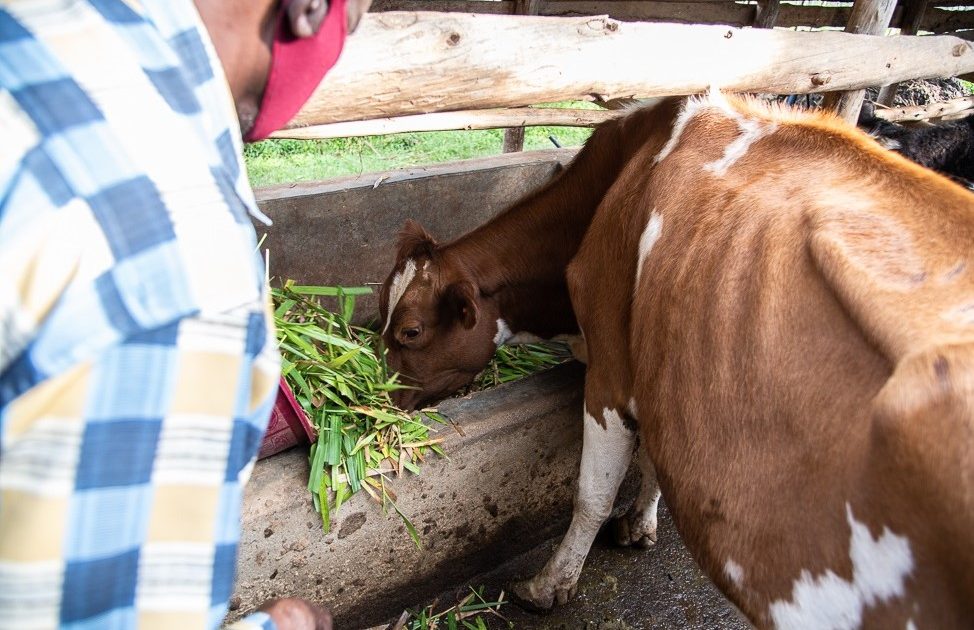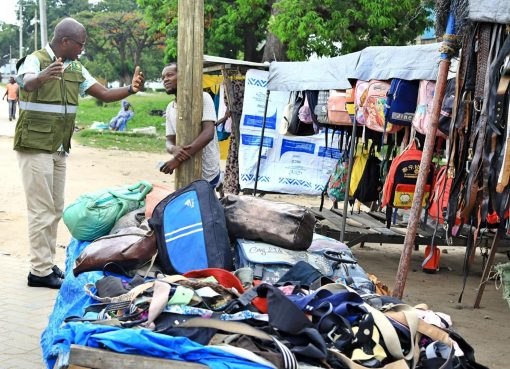More than 1,000 dairy farmers in Western Kenya have doubled their milk production and grown their incomes by saving on high-cost feed and growing their own high-quality, drought-resilient forage grasses.
Under Grass to Cash project of the Alliance of Biodiversity International and the International Centre for Tropical Agriculture (CIAT), the farmers have undergone training and use of demonstration plots since 2018 in new varieties of grasses.
Researchers have been working with farmers in Siaya, Kakamega, Bungoma and Busia counties to test ten new varieties of grasses that are higher in protein, lower in fiber and mature faster in order to boost both the quality and quantity of milk.
Dickson Osogo, a dairy farmer in Siaya County and who joined the research work two years ago, says that he had three cows and struggled with high commercial feed prices and poor-quality Napier grass.
“I joined the Grass to Cash project out of curiosity and now, having attended trainings and tried new planting, farm management, harvesting and feeding methods, I have managed to buy two more cows and set aside half an acre of my farm to cultivate the grasses myself and cut costs,” Osogo says.
He explained that when he first planted the cultivars variety and fed them to his cows alongside Napier, he noticed the cows preferred the cultivars and that is what motivated him to expand the area under production.
“Now I have recorded an increase of up to six litres of milk per cow from milking twice per day. I don’t use a lot of grass when feeding them like I used to with Napier. The grasses also mature fast. When I first planted them, they matured within 10 weeks.”
Osogo has increased his monthly income from selling milk from Sh. 11,000 to Sh. 37,500 since introducing the grasses.
“I am now also able to sell milk and still leave some for my family to consume, including my grandchildren,” says the father of nine, who has used the proceeds of the milk sale to educate his children and take care of other family needs.
He is now a peer trainer with Send a Cow, a partner organization of the Alliance, working with 3,000 vulnerable farmers to improve their nutrition, health and income opportunities in the region.
“I train 35 farmers in Siaya County, demonstrating benefits of the grasses through sharing my experience. I also give interested farmers forage seeds, and visits their farms to advise them on good farm management practices for optimum grass yields,” Osogo said.
Ruth Odhiambo, a senior research assistant at the Alliance who worked with farmers to test the new grass varieties, said: “We realized that the biggest problem farmers in Western Kenya faced was lack of animal feed. Up to 80 percent of farmers relied on Napier, which has serious disease problems and which hinders grass production.
“Finding quality grasses and seed with high protein content, which could translate to improved milk yields and incomes, has been a real challenge for farmers,” she said.
The Kenya Agriculture and Livestock Research Organization (KALRO) tested the grasses for suitability in local conditions before they were released to farmers.
David Miano, a forage agronomist at KALRO, said that even as governments works towards making agriculture a business, there is need to explore how to convert what is being researched into a money-making activity.
“We have worked with development partners and farmer organizations to disseminate the forages, and each partner has had a crucial role to play in making these new grasses available to as many farmers as possible,” Miano said.
Advantage Crops, a partnering seed company, has collaborated with the research teams to commercialize some of the new forage seed varieties, making them more easily available to farmers within shorter distances and addressing seed shortages.
They have also repackaged the seed into more affordable sizes, from 50-gram packs to one-kilogram packs which vary in price from around Sh. 3, 700 to Sh. 4,000 per kilogram depending on the variety.
Charles Wasonga, Company Director at Advantage Crops, said: “This is a great opportunity for farmers, whether they own cows or land, to step forward and venture into a different direction, in which their farming enterprises can be profitable.
He noted the need to intensify these campaigns so that more of the potential beneficiaries can experience what the alternative fodders can offer. “Young people without cattle are also benefitting, growing the fodder and selling it to farmers, and this is encouraging new entrepreneurial, income-generating opportunity,” Wasonga said.
The Grass to Cash project is a project of the Alliance of Biodiversity International and the International Centre for Tropical Agriculture (CIAT), in partnership with The Kenya Agriculture and Livestock Research Organization (KALRO), Advantage Crops Limited and Send a Cow and farmers.
by Wangari Ndirangu




